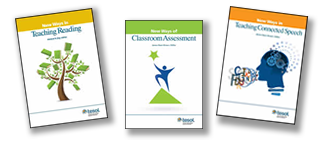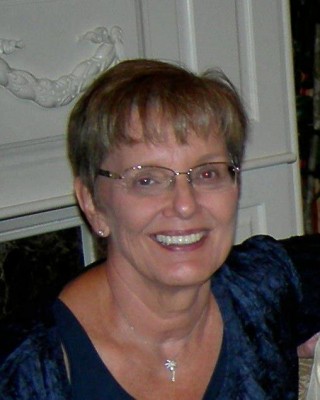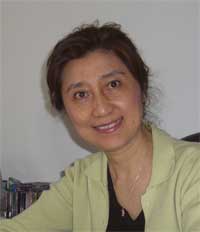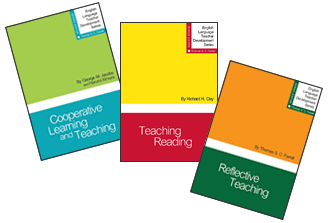Free TESOL Quarterly Article:
"Lexical Thresholds for Reading Comprehension: What They Are and How They Can Be Used for Teaching Purposes"
December 2013: Volume 47, Issue 4
This article first appeared in TESOL Quarterly, Volume 47, Number 4, pgs. 867–872. Subscribers can access issues here. Only TESOL members may subscribe. To become a member of TESOL, please click here, and to purchase articles, please visit Wiley-Blackwell. © TESOL International Association.
We do not need to understand every single word when we read a text. Some words are not crucial for our comprehension and can therefore be ignored. Some unfamiliar words can be inferred from the text context. If they cannot be inferred, they can be looked up in a dictionary. However, ignoring unknown words, guessing them and looking them up in a dictionary cannot compensate for lack of good vocabulary knowledge. It is possible to ignore some unknown words in a novel, or a story, but not in texts dense in academic or professional information, such as medical or legal texts. Even if we can use contextual clues successfully, not all contexts provide clues for unknown words. Moreover, readers often ignore clues when they mistakenly consider unfamiliar words as familiar. Most importantly, clues often appear in words which themselves are unknown to learners and are therefore unusable. (For a discussion of inferring words from context, see Laufer, 1997, 2005.) A good dictionary is certainly helpful for finding the meaning of unknown words, assuming the reader knows how to use the dictionary efficiently. But looking up a large number of words may consume too much time and interfere with reading fluency. Hence, neither guessing nor dictionary use strategies can compensate for insufficient knowledge of the text’s vocabulary.
We can ask two related questions about the minimal lexis necessary for comprehension: (1) What percentage of a text’s vocabulary should readers know to comprehend the text without resorting to compensatory strategies? (2) How large should the reader’s vocabulary be in order to understand the necessary percentage of the text’s words? The minimal vocabulary in terms of the percentage of familiar words in a text and the reader’s vocabulary size is the lexical threshold required for understanding an authentic text.
Why is it important to quantify the lexical threshold? Most researchers agree that only when readers possess a critical mass of second language (L2) knowledge (lexical and grammatical) can general reading skills, such as distinguishing between main and peripheral information, between explicit and implicit material, operate most efficiently (Bernhardt & Kamil, 1995; Carrell, 1991; Clarke, 1980; Lee & Lemonnier-Schallert, 1997). Furthermore, vocabulary knowledge is a good predictor of reading proficiency, if not the best (Bernhardt & Kamil, 1995; Laufer, 1992; Nation 2001, 2006; Qian, 2002; Ulijn & Strother, 1990).
How Much of a Text’s Vocabulary Should Readers Know to Reach Adequate Comprehension?
Laufer (1989) found that the knowledge of 95% of the text’s vocabulary was usually required to score 55% on a comprehension test and suggested that 95% of lexical coverage was the lexical threshold.
This article first appeared in TESOL Quarterly, 47, 867–872. For permission to use text from this article, please go to Wiley-Blackwell and click on "Request Permissions" under "Article Tools."
doi: 10.1002/tesq.140
TC Monthly Giveaway Congratulations to Carol Romett, of Fairfax, Virginia, for being the winner of the May 2014 TESOL Connections Monthly Giveaway. Carol has won a free TESOL gift membership to share with a friend or colleague.
This month, TESOL is giving away a free
New Ways Book Set!

The TESOL New Ways Series provides practical activities for you to use in your classrooms. The books cover a range of topics, from assessment to reading, from business English to classroom games—and they cover a range of levels, from young children to adults. Use the activities in these books in your classroom today!
The winner can choose any three (3) New Ways books to add to his or her professional development library!
Click here to enter
Drawing closes 27 June 2014, 11:59 pm EST
TESOL Blogs Interested in writing a blog for TESOL?
Contact Tomiko Breland with your idea or for submission details.
Check out the latest TESOL Blogs:
|
Collaborative Teaching: Addressing ESL Teacher Concerns, by Judie Haynes
 Twelve years ago, I was interested in how collaborative teaching might work for our ESL program. I had read about ESL teachers who were “pushing into” the general education classroom to collaborate with classroom teachers and wanted to see for myself. After meeting with administrators and some classroom teachers, I had the advantage of being able to choose the teacher, the grade level, and the subject area for this experiment. I decided to push into Ms. Parson’s 3rd grade social studies class, where I had a group of intermediate English learners (ELs). Read More. Twelve years ago, I was interested in how collaborative teaching might work for our ESL program. I had read about ESL teachers who were “pushing into” the general education classroom to collaborate with classroom teachers and wanted to see for myself. After meeting with administrators and some classroom teachers, I had the advantage of being able to choose the teacher, the grade level, and the subject area for this experiment. I decided to push into Ms. Parson’s 3rd grade social studies class, where I had a group of intermediate English learners (ELs). Read More.
|
|
What Does It REALLY Take to Succeed? A Speaking Activity, by Alexandra Lowe
 At the NYS TESOL Applied Linguistics Conference at Columbia’s Teachers College earlier this year, much was made of Bloom’s Taxonomy and the importance of giving ESL students ample opportunities to practice “higher order thinking skills” (HOTS). At the NYS TESOL Applied Linguistics Conference at Columbia’s Teachers College earlier this year, much was made of Bloom’s Taxonomy and the importance of giving ESL students ample opportunities to practice “higher order thinking skills” (HOTS).
This caused me to take a fresh look at my own lesson plans to make sure I was including activities that challenged my intermediate-level adult ELLs to sharpen their critical thinking skills. Assured by several presenters at the conference that “ranking” activities promote critical thinking, I took what otherwise might have been a pedestrian discussion topic focused on “What success means to you . . . ” and turned it into a lively HOTS activity. Here’s how... Read More. |
|
Demystifying Myths About Leadership: An NNEST Perspective, by Yilin Sun, TESOL President
 Who can become a leader for a professional organization? As nonnative-English-speaking (NNES) educators, especially new teachers, many tend to say, “I’m just a graduate student,” or “I’m just a new teacher in the field. How can I take a leadership role with established professionals?” Who can become a leader for a professional organization? As nonnative-English-speaking (NNES) educators, especially new teachers, many tend to say, “I’m just a graduate student,” or “I’m just a new teacher in the field. How can I take a leadership role with established professionals?”
Let me share a personal story of how I got started. When I was a young graduate student at the Ontario Institute for Studies in Education (OISE)/University of Toronto in Canada about 29 years ago, my professors encouraged us to attend professional conferences. I remember my first: It was TESOL Ontario’s annual conference... Read More. |
|
Please Don’t Stop the Music! Using Music in a Writing Class, by Elena Shvidko
 As many of us know, music is a great tool for teaching English. It provides wonderful grammar exercises, opportunities for practicing listening skills, and topics for class discussions. Moreover, reflecting social values, ideologies, daily life, and human relationships, music provides an intercultural component to teaching the language. Music is also a source of authentic language use. Finally, it creates a more pleasant setting in classroom. As many of us know, music is a great tool for teaching English. It provides wonderful grammar exercises, opportunities for practicing listening skills, and topics for class discussions. Moreover, reflecting social values, ideologies, daily life, and human relationships, music provides an intercultural component to teaching the language. Music is also a source of authentic language use. Finally, it creates a more pleasant setting in classroom.
Unfortunately, music is rarely used in writing classes. Yet, there are various ways how music can enrich a writing classroom and provide an excellent ground for practicing important writing skills. Read More. |
TESOL Bookstore

Semesters Are Ending
It’s Time for Rest and Reflection
TESOL Has the Ideal Books to Help
Language Teaching Insights From Other Fields: Sports, Arts, Design, and More
Christopher Stillwell, editor
 Chapters offer practical tips from language teachers with extensive experience in other fields. It is a book full of surprises that translate into new ways of thinking about teaching and the classroom. Find out how a restaurant reviewer would critique an essay, how a martial arts master would facilitate language practice, how a bartender would create a supportive environment for learning, and much more. Chapters offer practical tips from language teachers with extensive experience in other fields. It is a book full of surprises that translate into new ways of thinking about teaching and the classroom. Find out how a restaurant reviewer would critique an essay, how a martial arts master would facilitate language practice, how a bartender would create a supportive environment for learning, and much more.
English Language Teacher Development Series
Thomas S. C. Farrell, series editor

Short ● Practical ● Interactive
Buy Them All—20% OFF purchase of 3 or more
Dr. Thomas S. C. Farrell, series editor, is renowned for his work around the world in reflective practice and language teacher education and development. His ELTD series presents a theory-to-practice approach written in a jargon-free and accessible manner for all teachers of English (native and nonnative speakers of English, experienced and novice teachers). Each topic offers practical methods and reflective breaks that allow teachers to interact with the materials.
|
 |
|
|
 |
| Director, Intensive English Langauge Institute, Creighton University, Omaha, NE, USA
Director, Center for English Language Learning, University of Missouri, Columbia, Missouri, USA
ESL Instructor, Oregon State University, Corvallis, Oregon, USA
Want to post your open positions to Job Link? Click here.
To browse all of TESOL's job postings, check out the TESOL Career Center. |
 |
|
 |
| ADVERTISEMENT |
 |
 |
 |
 |
 |
| TESOL Teacher of the Year |
|
 |
|
 |
Are you the next
TESOL Teacher of the Year?
Apply or nominate
someone now!
The winner receives:
• US$1,000
• A free 1-year TESOL membership
• US$250 in TESOL books
• Registration, travel, and hotel for the 2015 TESOL Annual Convention in Toronto, Canada—plus a session as an invited speaker
• And More! |
 |
|
 |
|